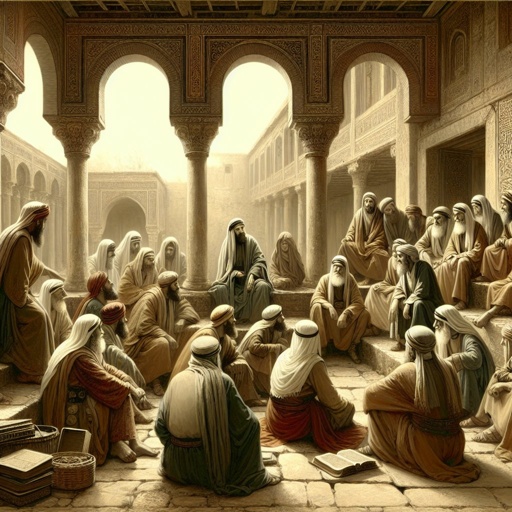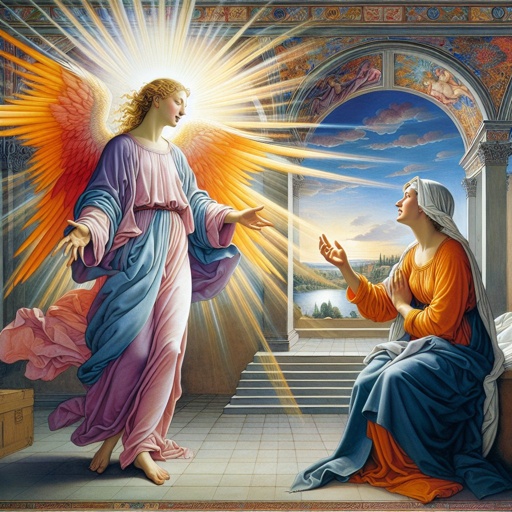What does Luke 7:1 mean?
"Now when he had ended all his sayings in the audience of the people, he entered into Capernaum." - Luke 7:1

Luke 7:1 - "Now when he had ended all his sayings in the audience of the people, he entered into Capernaum."
Luke 7:1 from the King James Version (KJV) of the Bible reads:
"Now when he had ended all his sayings in the audience of the people, he entered into Capernaum."
This verse is part of the larger narrative of the Gospel of Luke, which is the third of the four Gospels in the New Testament. The Gospel of Luke was written by Luke the Evangelist, a companion of the Apostle Paul, and it is believed to have been written around 80-110 AD. The Gospel of Luke is known for its detailed and compassionate portrayal of Jesus’ life, teachings, and ministry, and it is often referred to as the Gospel of Mercy.
The specific verse, Luke 7:1, comes at the beginning of a new section in Luke's Gospel. In the preceding chapter, Jesus had been preaching to a large crowd, delivering what would come to be known as the Sermon on the Plain, a collection of Jesus' teachings and moral instructions. After finishing his sermon, Jesus enters the town of Capernaum.
The context of this verse is important in understanding its meaning. Capernaum was a town in the region of Galilee, where Jesus had established his ministry. The fact that Jesus is entering Capernaum is significant because it signifies a shift in location and a new phase in his ministry. Throughout the Gospel of Luke, Jesus moves from place to place, teaching and healing those who come to him. Capernaum was central to many of Jesus' activities and miracles, making it an important setting in the Gospel of Luke.
One of the key themes in the Gospel of Luke is the universality of Jesus' message. Luke portrays Jesus as a figure who brings the message of salvation to all people, regardless of their social status or background. In entering Capernaum, Jesus is continuing his mission to reach out to all people, regardless of their circumstance.
The verse also communicates the idea of fulfillment. In the preceding chapters of Luke, Jesus has been fulfilling the Old Testament prophecies and teachings, and now, as he enters Capernaum, it is a fulfillment of his mission to bring the message of the kingdom of God to the people there.
Symbolically, Capernaum can represent the world in which Jesus came to save. By entering Capernaum, Jesus is entering into the world, taking on the sins and suffering of humanity. This symbolizes Jesus' willingness to be present with us in our lives and to offer hope and healing.
Overall, Luke 7:1 is a significant verse in the Gospel of Luke. It marks a turning point in Jesus' ministry and serves as a reminder of the universality of Jesus' message and his willingness to enter into the world to bring salvation and hope to all people. It sets the stage for the miracles and teachings that will follow in Capernaum, and it underscores the central themes of fulfillment and the universal reach of Jesus' mission.
Luke 7:1 Artwork

Luke 7:1 - "Now when he had ended all his sayings in the audience of the people, he entered into Capernaum."

Luke 7:1-10 “When Jesus had finished saying all this to the people who were listening, he entered Capernaum. There a centurion’s servant, whom his master valued highly, was sick and about to die. The centurion heard of Jesus and sent some elders of the Jews to him, asking him to come and heal his servant. When they came to Jesus, they pleaded earnestly with him, “This man deserves to have you do this, because he loves our nation and has built our synagogue.” So Jesus went with them. He was not far from the house when the centurion sent friends to say to him: “Lord, don’t trouble yourself, for I do not deserve to have you come under my roof. That is why I did not even consider myself worthy to come to you. But say the word, and my servant will be healed. For I myself am a man under authority, with soldiers under me. I tell this one, ‘Go,’ and he goes; and that one, ‘Come,’ and he comes. I say to my servant, ‘Do this,’ and he does it.” When Jesus heard this, he was amazed at him, and turning to the crowd following him, he said, “I tell you, I have not found such great faith even in Israel.” Then the men who had been sent returned to the house and found the servant well.”

Luke 7:1-10 - "When Jesus had finished saying all this to the people who were listening, he entered Capernaum. There a centurion’s servant, whom his master valued highly, was sick and about to die. The centurion heard of Jesus and sent some elders of the Jews to him, asking him to come and heal his servant. When they came to Jesus, they pleaded earnestly with him, “This man deserves to have you do this, because he loves our nation and has built our synagogue.” So Jesus went with them. He was not far from the house when the centurion sent friends to say to him: “Lord, don’t trouble yourself, for I do not deserve to have you come under my roof. That is why I did not even consider myself worthy to come to you. But say the word, and my servant will be healed. For I myself am a man under authority, with soldiers under me. I tell this one, ‘Go,’ and he goes; and that one, ‘Come,’ and he comes. I say to my servant, ‘Do this,’ and he does it.” When Jesus heard this, he was amazed at him, and turning to the crowd following him, he said, “I tell you, I have not found such great faith even in Israel.” Then the men who had been sent returned to the house and found the servant well."

Luke 1:7 - "And they had no child, because that Elisabeth was barren, and they both were now well stricken in years."

Luke 20:7 - "And they answered, that they could not tell whence it was."

Luke 1:1

Luke 7:35 - "But wisdom is justified of all her children."

Luke 7:18 - "And the disciples of John shewed him of all these things."

Luke 24:1

Luke 1:32

Luke 1:32

Luke 1:32

Luke 7:23 - "And blessed is he, whosoever shall not be offended in me."

Luke 1:32

Luke 1:39

Luke 1:32

Luke 1:32

Luke 7:48 - "And he said unto her, Thy sins are forgiven."

Luke 22:7 - "¶ Then came the day of unleavened bread, when the passover must be killed."

Luke 4:7 - "If thou therefore wilt worship me, all shall be thine."

Luke 8:7 - "And some fell among thorns; and the thorns sprang up with it, and choked it."

Luke 7:7 - "Wherefore neither thought I myself worthy to come unto thee: but say in a word, and my servant shall be healed."

Luke 7:5 - "For he loveth our nation, and he hath built us a synagogue."

Luke (1:37) For nothing will be impossible with God.”

Luke (1:37) For nothing will be impossible with God.”

Luke (1:37) For nothing will be impossible with God.”

Luke (1:37) For nothing will be impossible with God.”

Luke (1:37) For nothing will be impossible with God.”

Luke (1:37) For nothing will be impossible with God.”

Luke (1:37) For nothing will be impossible with God.”